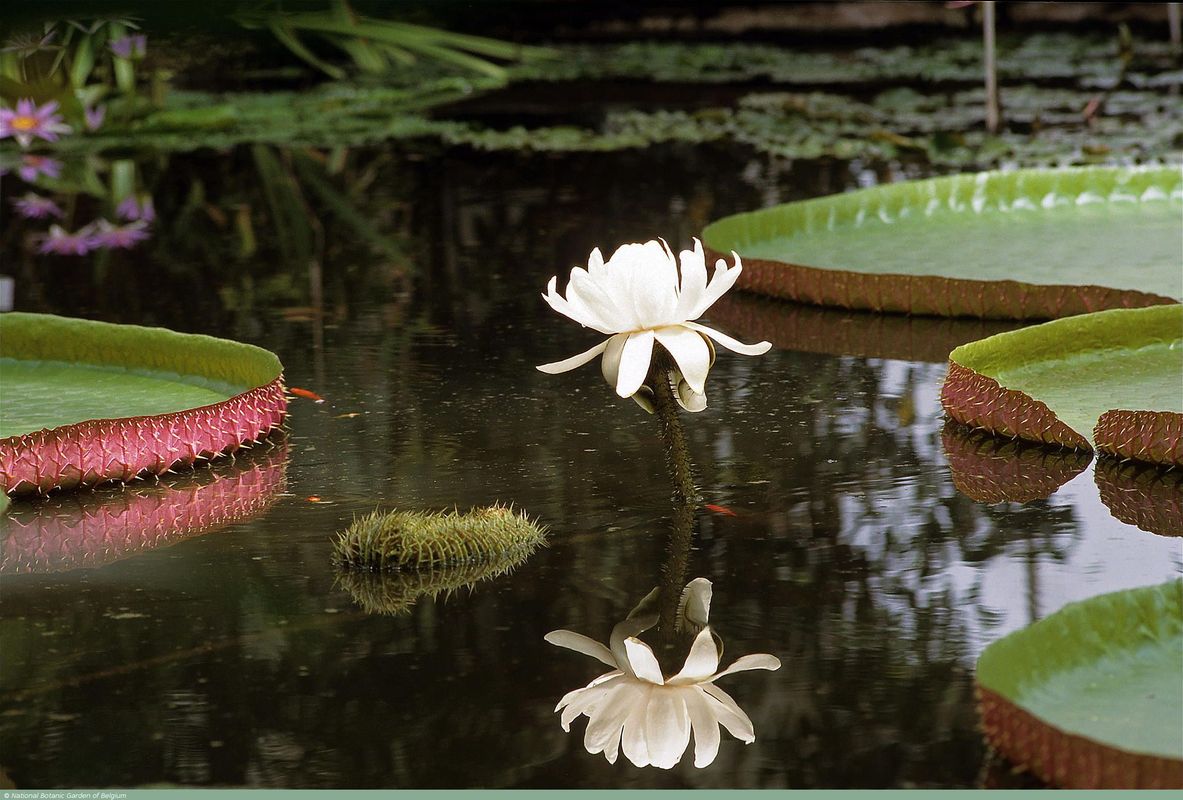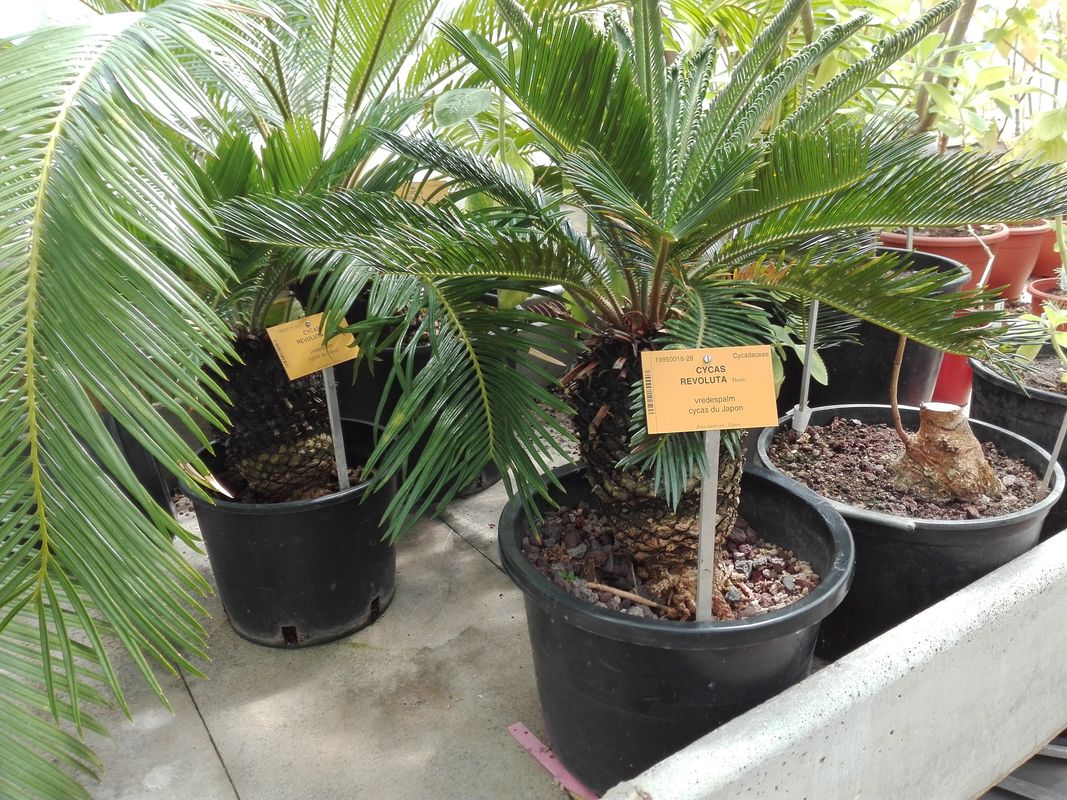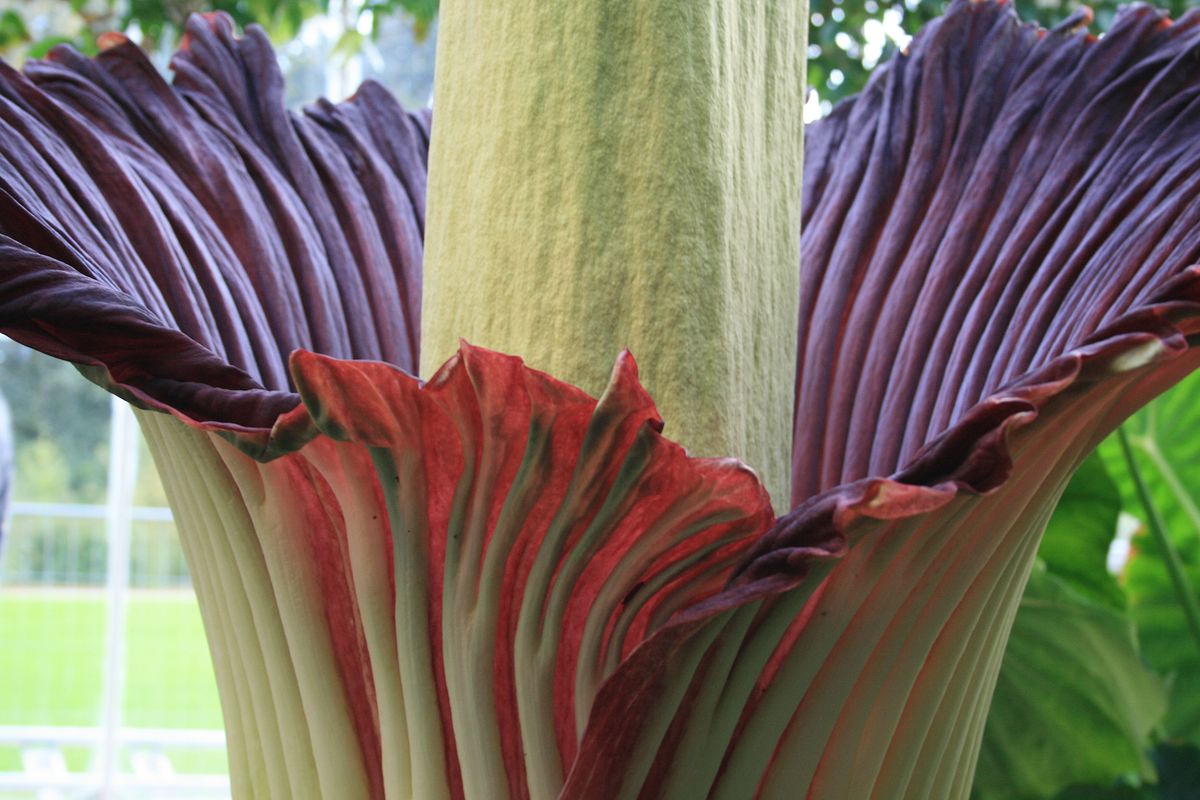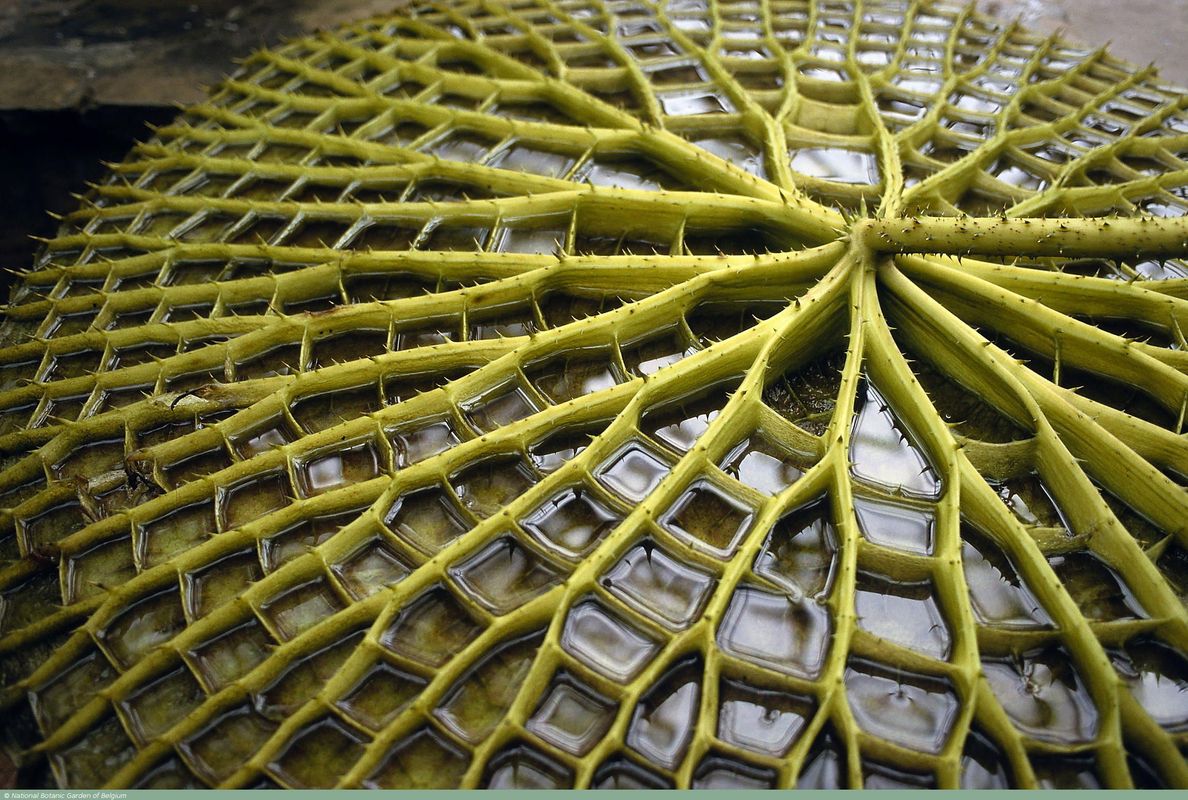Don't miss out!
Masterpieces under glass
A number of plants from the collections of Meise Botanic Garden attract special attention from the public: here are some of our top picks!
Giant arum
Our most notorious plant is probably the giant arum (Amorphophallus titanum). When it starts flowering, it forms an inflorescence that is 1.5 to sometimes more than 3 metres high, which is the largest unbranched inflorescence of all plants. Flowering only lasts a few days, so it’s important to be there at the right time. Amorphophallus titanum only grows in the wild in the rain forests of Sumatra. The flowering plants give off the scent of rotting flesh, which attracts pollinating insects.
The Botanic Garden has several adult specimens, so we can regularly show a flowering specimen. The Anthropogenic Biome greenhouse in the Plant Palace offers the plants the perfect growing conditions.
Giant water lilies
In the Tropical Wetlands greenhouse in the Plant Palace, the giant water lilies on the pond immediately grab your attention. Victoria cruziana has large floating leaves with raised edges. The air in and between the ribs at the bottom of the leaf provides enormous buoyancy: it can support up to 40kg. During the summer, the leaves are usually between one and two metres in diameter. At that time, we hold annual photo shoots to take pictures of babies on the leaves of the giant water lily.
The giant water lilies have been cultivated in the Botanic Garden for over a hundred years. From the end of September, the leaves die off. In the winter, the pond is empty. In February, we sow new plants so that they will have leaves again in the spring.
Palm ferns
Palm ferns (Cycadales) are neither ferns nor palms. This group of plants with large, feathery leaves carries cones and has been on the earth for more than 300 million years.
In the Tropical Rainforest greenhouse in the Plant Palace, you will come across the Laurent palm fern (Encephalartos laurentianus). This endangered species is naturally found only in a valley on the border of the DR Congo and Angola. The Laurent palm fern was discovered in 1902 by Louis Gentil, an employee of the former Botanic Garden. The seven now mature trees were grown from seeds brought over from the Congo in the 1930s and 1950s. In the 1990s, the plants flowered for the first time. The cones were pollinated so that seeds of this species could be distributed to other botanical gardens worldwide.
In one of the collection greenhouses, currently not open to the public, is the oldest plant in the Botanic Garden: a female specimen of the Eastern Cape bread tree (Encephalartos altensteinii) that is more than 300 years old! The former Botanic Garden acquired the plant between 1826 and 1842. In that period, plants of this species from the Cape were used as ballast in the holds of ships of the Dutch East India Company. Several European botanical gardens acquired plants in this way. These plants are therefore among the oldest in Europe; they are unique pieces of heritage comparable to a painting by Rubens, Vermeer, or Rembrandt, contemporaries of these plants.







